Bale Mountains National Park
The Bale Mountains, The Bale Mountains National Park is located 400 km southeast of Addis Ababa in Oromia National Regional State in south-eastern Ethiopia. It was established in 1970, this park covers about 2,200 square kilometers of the Bale Mountains to the west and southwest of Goba in the Bale Zone. It belongs to the Bale-Arsi massif, which forms the western section of the south – eastern Ethiopian highlands. And it is the largest area of Afro-alpine habitat in the whole of the continent. It is a home for various flora and fauna species. The park which comprises reverie plains, woodlands and bush land, is a home for several endemic species like Mountain Nyala and Semien Fox, where the park is believed to be established to protect these two animal species.
Bale Mountains National Park is home to high mountains, The local boundary of the BMNP lies within five woredas: Adaba (west), Dinsho (north), Goba (northeast), Mana-Angetu (south) and Berbere (east). The park area is encompassed within geographical coordinates of 6º29′ – 7º10’N and 39º28′ – 39º57’E and covers the largest area above 3000 m asl. in Africa. Tullu Dimtuu, altitude 4377m a.s.l., is the highest peak in the park and the second highest peak in Ethiopia. The park includes a major Afro alpine plateau over 3500 m a.s.l. as well the slopes to the south that include low land tropical moist forest down to 1500 m as.l,. The mountains are the highest part of Bale region and the park lies in the north west corner of the region. The rest of the Bale region falls off quickly in altitude to the hot, dry low lands bordering Somalia to the south –east and south (BMNP GMP,2007).
The forest is also a home for different pig species, lions, leopards, spotted hyenas, African hunting dogs and many others. More over, the Bale Mountains are home for 16 endemic bird species.
The park is among the most suitable walking areas in the country with a chance to see several endemic and common species at a closer distance.
Fauna
The BMNP encompasses a broad range of habitats between 1,500 and 4,377 m altitude. These provide a large number of niches for animals, as a result, there is great variety in the fauna. Much of the original stimulus for making a National Park in the Bale Mountains was the plights of the endemic Mountain Nyala and the Ethiopian wolf. There are, in fact, at least 46 mammal species, and 160 bird species, in addition to the numbers of species from other animal orders-reptiles, amphibians etc., that all have a part in the complex ecosystems that have evolved in this unusual area.
A large proportion of the Bale Mountains fauna is endemic- found nowhere else in the world, and in some cases nowhere else in Ethiopia. The variety of species and high rate of endemicity is due to the wide variety of habitats conserved in BMNP and to the isolation of the highland areas of Ethiopia from other similar highlands in Eastern Africa, by the surrounding hot dry lands. Ethiopia as a whole has a large number of endemic species. Yalden (1983) calculated that almost 80% of the land in Africa over 3,000 m altitude occurs in Ethiopia, and speculated that the high rate of endemicity was a result of this very large area of highland.
It is certain that the numbers of endemic species in the invertebrates, and in the flora, will also prove to be very high in Bale. Information from a number of sources, but mainly from the works of Largen and Yalden, underlines the importance of the Bale Mountains as a center of endemicity, and reserve of unknown genetic resources, (Hillman,1986).
Flora
The three main sub-sections of the park Northern Gaysay area, Central peaks and Sannetti plateau area and Southern Harenna area are demarcated by altitude, and this also controls vegetation zonation. Thus the central peaks and plateau area consists of Afroalpine vegetation; the northern Gaysay area of grassland, swamp and woodlands; and the southern Harenna area of dense forest.
- Northern grasslands
This very small, but very important zone comprises the flat land each side of the Gaysay River, and on the west bank of the Web River. The area occurs in the extreme north of the park, between Gaysay Mountain and the Adelay Ridge.
These grasslands lie on almost flat land, whose drainage is poor, and inundation is frequent in the west season. Many places are, therefore, dominated by swamp grasses and sedges, especially of the Cyperus and Sciripus genera. Relatively higher parts are covered with low bush vegetation, dominated by Artemesia afra and Helichrysum splendium. Common grasses of these areas include those of the genera Andropogon, Bromus, Festuca and Poa.
The bush species Helichrysum splendium has been almost totally eradicated outside the park boundaries by domestic sheep and goats. Protection by the park fences has allowed it to re-grow in the park, to a point where it appears to be taking over from the Artemesia. Both species are important food plants for Mountain Nyala, and shelter for several species.
- Northern Woodlands
This vegetation zone occupies a narrow belt in the northern west, north and north east of the park. The upper limit is the tree line at 3,400 m, and the lower is the grasslands in flat valley bottoms at around 3,000 m. The term “woodland” has been used here, as opposed to forest, since tree cover is sparse with an incomplete canopy, a high inter-tree distance and only a single canopy layer for the most part. Ground cover by herbs and grasses is good. This vegetation zone is found on slopes that are relatively steep (20 – 30º), and has, in many places, been affected by man’s activities.
The species that dominate the northern woodlands are the trees Juniperus procera and Hagenia abyssinica. Most Junipers are relatively small (15-20 m tall) since the area is the upper limit to the species growth, and few are found near the upper tree line.
The species Hypericum revolutum, produces a dense bush growth at the lower edge of the woodlands, while at the upper tree line the species grows as a tall, slender tree to at least 5 m.
Extensive grass area occurs within the woodland especially on the steepest slopes. These contain similar species to the flat areas below, with the exception of the sedges. Some such areas have been artificially induced on high, flat ridges that were used for settlement in the past.
- Heather moorlands
Various heather species dominate the areas immediately above the tree line, from 3,400 to about 3,800 m altitude. Heathers in the genera Erica and Philipia cover all but the inundated valley bottoms. These plants will grow to over 5 m in height, but only exhibit this in a few places in the mountains. This vegetation is repeatedly burnt by local people, mainly to make the area more accessible and generate plants of a height that can be browsed by livestock. As a result the plants are rarely more than 1.5 m in height, and often much less.
Mature heather stands exhibit a good grass and herb layer beneath the canopy. Frequently burnt areas have a poor ground cover, of low species diversity.
- Afro alpine moorlands
This broad term covers a great range of microhabitats, controlled by a variety of soils, drainage, exposure and aspect in the high mountain area. Plant species diversity is low, and vegetation cover varies from 100% at the lower end of the altitude range and in sheltered areas, to less than 10% at the highest and exposed altitudes. Steep, rocky slopes and cliffs support very little vegetation growth. The higher in altitude a plant species is found, the smaller the growth form is likely to be as a protection against wind and frost. An additional factor that a major effect on vegetation at these altitudes, is the very high density of rodents, particularly the Giant Molerat (Tachyoryctes macrocephalus). The soil is constantly turned over and the plants cropped by the activities of these animals, such that many places on the Sanetti Plateau look as though they have been ploughed.
There are many flat areas on the plateau which become quickly inundated in the wet season, or remain wet year round. These swampy areas are dominated by the sedge Carex monostachya.
A distinctive feature of the vegetation of these altitudes is the giant plant Lobelia rynchopetalum. This species is found from 3,100 to 4,377 m, but the largest forms are found at the highest altitudes. The plant itself is unbranched, but reaches a height of 2-3 m before flowering, then sends up a tall flower spike to a total of 6 m or more. The dead flower spikes last for several years and are a characteristic sight of many parts of the central plateau and peak area.
- Harenna Forest
The Harenna Forest covers almost half of the park in area, at the southern park boundary and is a magnificent example of moist tropical forest, about which very little is known. It extends over a wide range of altitude, from 1,500 to 3,500 m, bridging the gap between Combretum/Terminalia dry, wooded grasslands and Afro alpine moor lands in just 60 km, probably the only place in Africa where this still occurs.
The upper part of this forest area is on steep slopes and differs little from the northern woodlands. A notable absence is Juniperus. The tree cover is very high and dense stands of Mountain Bamboo (Arundinaria alpine) cover large areas.
Below about 2,200 m, the slope is much gentler, and larger tree species appear, Podocarpus gracilior in particular. Trees over 30 m in height are common, there is good shrub undergrowth, a secondary canopy, lianes and dense epiphytic growths on all larger trees.
The steeper slopes of the forest on the Harenna Escarpment are swathed in mist for much of the year, often all day. There are no rainfall records for the area, but it is evident from the many small streams, dense epiphytes, and the dense forest and undergrowth, that this area receives, retains, and slowly releases, much water (Hillman, 1986).
Source: EWCA

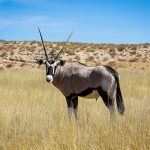
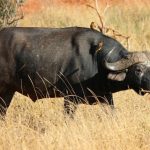
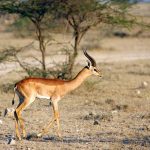


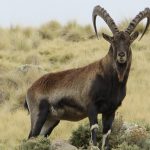

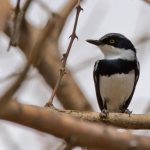





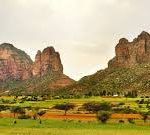
Leave a Reply